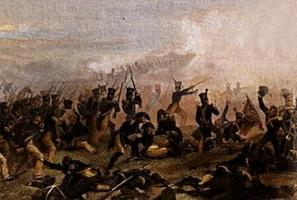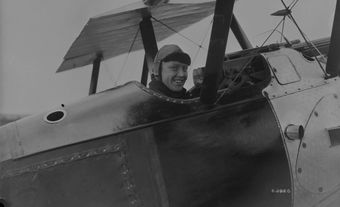Phineas Riall
Phineas Riall, British army officer, field commander, colonial governor, military figure in the WAR OF 1812 (b probably at Clonmel, Ireland 15 Dec 1775; d at Paris, France 10 Nov 1850). Phineas Riall entered the army in January 1794 and was a major by the end of the year. He first saw action during the Irish Rebellion of 1798-99 and gained extensive field experience in the West Indies, where he commanded a brigade in 1809. In 1810 Riall returned to England and was promoted to colonel. By 1813, he was a major general.
Riall in the War of 1812
Riall arrived in UPPER CANADA in August 1813 and was placed in command of the Right Division, a geographic entity in the NIAGARA PENINSULA. During December, he led the campaign of retribution that laid waste to the frontier between Buffalo and Lewiston, NY, in retaliation for destruction of the village of Niagara (Niagara-on-the-Lake) by American forces earlier that month.
Riall then prepared the defensives along the Niagara River for the coming campaign season. He distributed his 3400 British regulars and Canadian militia at 4 main points along a 50-kilometre stretch. FORT GEORGE and FORT NIAGARA guarded the mouth of the Niagara River; 13 kilometres south was QUEENSTON HEIGHTS, followed by Chippawa at the junction of the Chippawa and Niagara Rivers. Lastly, at the southern end of the peninsula, was FORT ERIE.
When Riall learned that American forces under Major General Jacob Brown had landed at Fort Erie on 3 July 1814, he moved forward to Chippawa and sent a detachment further south to delay the Americans, providing him time to concentrate his regulars at Chippawa.
By 4 July, the Americans were south of Chippawa. Riall ordered light infantry across the river to harass them. Convinced his opponents were militia, Riall committed a 2000-man brigade to battle the next afternoon, where they faced a similarly sized force under Brigadier-General Winfield Scott. Realizing these were actually well-trained regulars, Riall formed his men and a prolonged firefight ensued, which the Americans won by bringing additional artillery onto the field. The American regulars had defeated British regulars in an open battle for the first time.
Riall eventually withdrew to the northern end of the peninsula and awaited reinforcements. Meanwhile Brown's plan to meet the navy on Lake Ontario had fallen apart. He failed to draw the British from Fort George and withdrew back to Chippawa. By this time, General DRUMMOND had taken command of the British forces and Riall was his deputy. On 25 July 1814, Drummond learned the Americans were advancing north, and ordered his troops to concentrate at LUNDY'S LANE, near Niagara Falls. This resulting battle was the largest in the northern theatre, during which Riall was wounded in the arm and taken prisoner. He remained in Massachusetts until he was released in December 1814.
Phineas Riall never held another important military command although, through seniority, he gained promotion to lieutenant general in 1835 and general in 1841. He was governor of Grenada from 1816-23 and was knighted in 1833.

 Share on Facebook
Share on Facebook Share on X
Share on X Share by Email
Share by Email Share on Google Classroom
Share on Google Classroom




